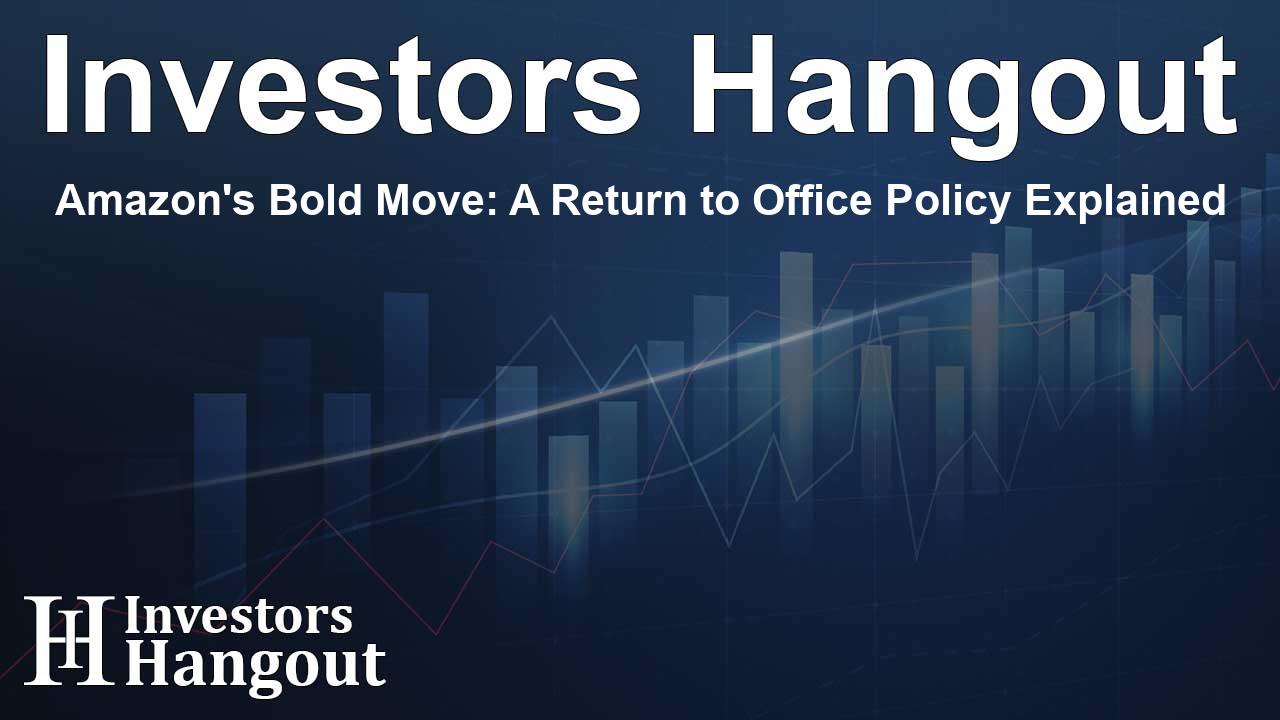Amazon's Bold Move: A Return to Office Policy Explained

Amazon's New Office Policy: What It Means for Employees
In a surprising move, Amazon has decided to mandate that employees return to the office five days a week starting January. This announcement has sent waves of concern through the professional world, prompting fears that other companies may follow suit. Yet, analysts suggest that CEO Andy Jassy might reconsider this aggressive approach in the near future.
Recent studies, like the one conducted by Flex Index, assessed the return-to-office (RTO) policies of over 9,000 firms. The findings revealed a shift in workplace dynamics, indicating that around half of U.S. companies had asked their employees to return to the office as early as last January. However, only one-third of these firms have maintained a strict five-day workweek requirement.
Interestingly, hybrid work arrangements are becoming more popular, with 37% of employers offering this flexible option, a notable increase from 20% at the start of the year. Contrary to the increasing media focus on companies enforcing mandatory office attendance, Amazon's rigid stance is actually an exception in a landscape that is increasingly embracing flexibility.
Trends in Workplace Flexibility
The data underscores that flexibility in the workplace is trending upward. Just last year, 50% of businesses granted their employees some control over where they work; this figure has now risen to 69%. Workers are finding ways to adapt and shift, as one employee noted on Reddit, where their company had strongly insisted on a three-day in-office policy before eventually retracting.
Research shows that only 3% of tech companies are demanding full-time office attendance, which is a marked decline from 8% the previous year. This illustrates a broader trend in the technology sector, where many leaders are backtracking on previous RTO mandates. The shift seems to be a response to employee feedback and changing workplace dynamics.
Adapting to the Changing Workplace Landscape
The average number of days employees are asked to be in the office varies across major cities. For instance, in London, businesses request an average of 3.1 days in the office, while workers typically show up only 2.7 days. In New York, the expectation is 3.7 days, yet employees average only 3.1 days of attendance.
These patterns aren't confined to just a couple of cities; a report from a well-respected think tank indicates that similar trends exist in urban centers around the globe, like Toronto and Singapore. Amazon, in particular, has faced pushback from employees regarding its RTO policies. Last year, about 30,000 workers signed a petition against the company's mandate, with over 1,800 pledging to walk out to express their dissatisfaction.
Future Implications for Amazon and Its Workers
In the wake of these developments, Amazon has empowered managers with the authority to take action against employees who do not comply with the three-day work requirement, including potential job terminations. Additionally, remote workers may be required to relocate closer to an office or choose to resign.
Despite the stringent enforcement of RTO policies, reports show that complaints about employee compliance still persist. Daan Van Rossum, a respected author and founder of FlexOS, pointed out that companies, including Amazon, set hybrid work expectations knowing full well that compliance could fluctuate. This negotiation strategy, where employers demand five days to effectively secure three, reflects how accustomed employees have become to the freedom and productivity gains associated with a hybrid work environment.
Looking ahead, as tensions rise between 'office nostalgia' and the practical reality of continued low office occupancy, it seems likely Amazon will adjust its policies. After all, before the pandemic, many employees didn’t attend the office five days a week either, with occupancy traditionally sitting around 70%.
Reflecting on the evolving nature of work, Van Rossum believes that employers must recognize these shifts in behavior. The anticipated loosening of mandates may acknowledge the reality of half-empty offices following compliance with a rigid RTO structure.
Frequently Asked Questions
What is Amazon’s new office policy?
Amazon is mandating all employees to return to the office five days a week starting in January.
How many companies are maintaining strict in-office mandates?
Only a third of companies have kept their strict five-day in-office mandates in place.
What trend are employers noticing in office attendance?
Hybrid working options are on the rise, with 37% of employers now offering it, up from 20% earlier this year.
How have tech companies reacted to the return-to-office mandates?
Just 3% of tech firms are insisting employees go into the office full-time, a decline from 8% last year.
What are the implications of Amazon's office policy?
Employees face stringent measures for non-compliance with the RTO policy, and adjustments may occur as workplace dynamics evolve.
About Investors Hangout
Investors Hangout is a leading online stock forum for financial discussion and learning, offering a wide range of free tools and resources. It draws in traders of all levels, who exchange market knowledge, investigate trading tactics, and keep an eye on industry developments in real time. Featuring financial articles, stock message boards, quotes, charts, company profiles, and live news updates. Through cooperative learning and a wealth of informational resources, it helps users from novices creating their first portfolios to experts honing their techniques. Join Investors Hangout today: https://investorshangout.com/
Disclaimer: The content of this article is solely for general informational purposes only; it does not represent legal, financial, or investment advice. Investors Hangout does not offer financial advice; the author is not a licensed financial advisor. Consult a qualified advisor before making any financial or investment decisions based on this article. The author's interpretation of publicly available data shapes the opinions presented here; as a result, they should not be taken as advice to purchase, sell, or hold any securities mentioned or any other investments. The author does not guarantee the accuracy, completeness, or timeliness of any material, providing it "as is." Information and market conditions may change; past performance is not indicative of future outcomes. If any of the material offered here is inaccurate, please contact us for corrections.